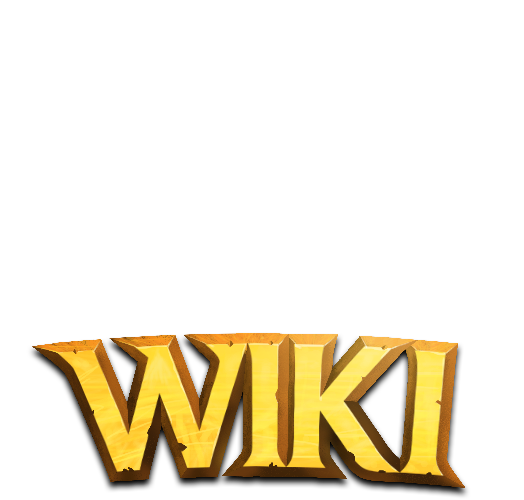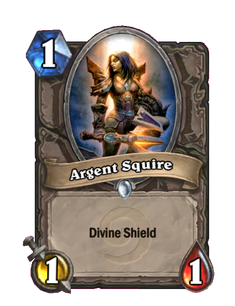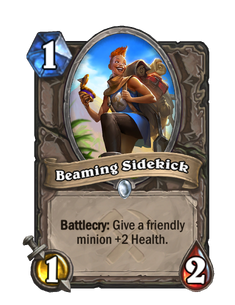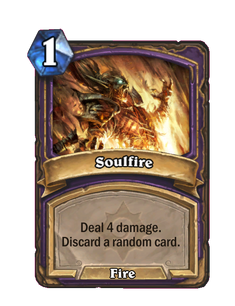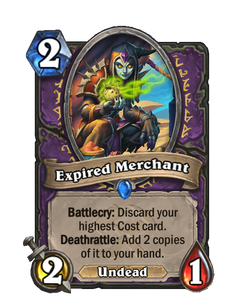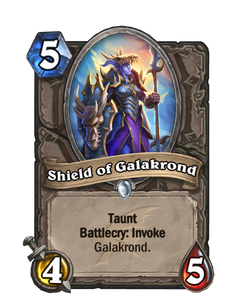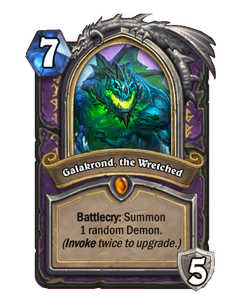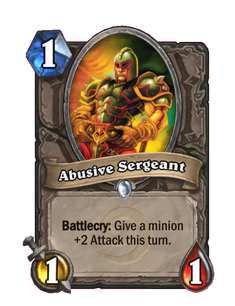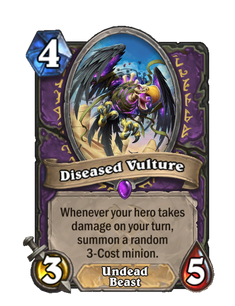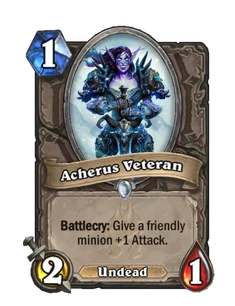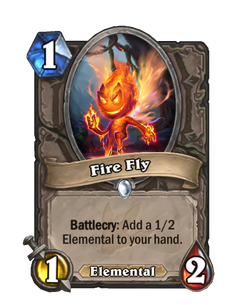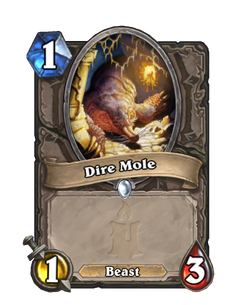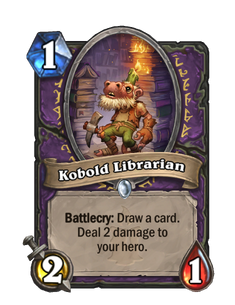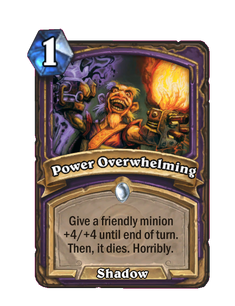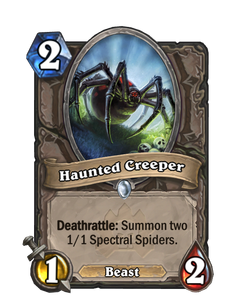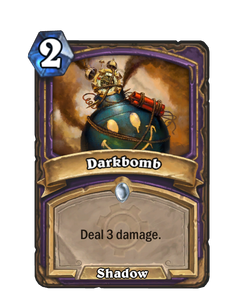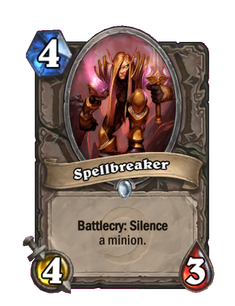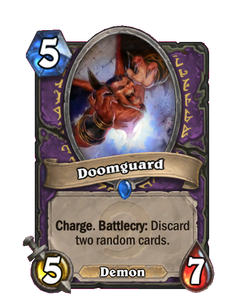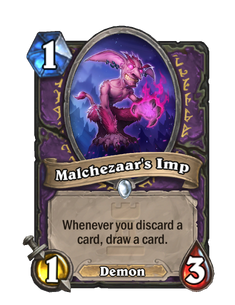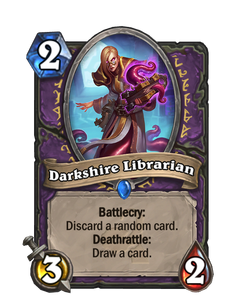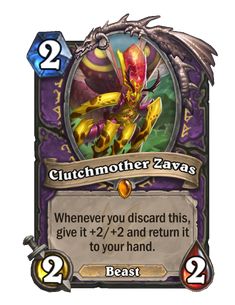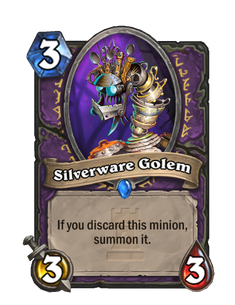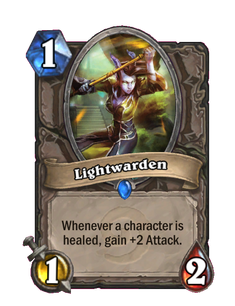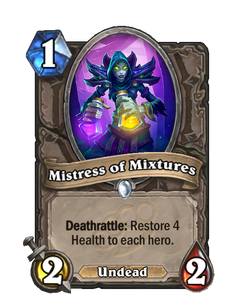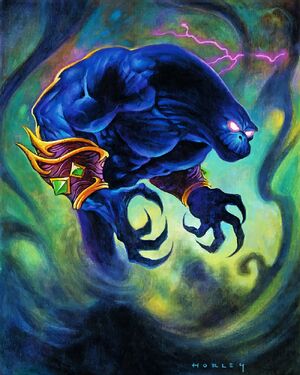
Zoolock or Zoo Lock is a type of warlock zoo deck, using a large number of cheap minions and buffs to overwhelm the opponent and trade efficiently against their minions. By far the most popular zoo deck, Zoolock is often referred to simply as "Zoo".
Zoolock is one of the most affordable and accessible decks, with a relatively low crafting cost and simple core strategy, and is often recommended for new players. Despite its accessible strategy, mastering Zoolock is far more difficult, and the deck is often a successful high-tier deck, as well as a more or less perennial deck type in the wider meta.
With One Night in Karazhan, many Zoolock decks were converted to Discardlock, with the new focus on discard effect synergies, and it was not until some revitalization with cards such as Prince Keleseth,
Acherus Veteran, and
Bonemare in Knights of the Frozen Throne that original Zoolock made a decisive comeback.
Deck type[]
Zoolock's key strategies are to flood the board; control the board; and trade efficiently. Optional deck variants such as Sea Giant reward the number of friendly minions in play, while others such as
Dire Wolf Alpha simply require minions that are ready to attack, and summoning-related cards like
Knife Juggler and
Darkshire Councilman reward frequently summoning minions, regardless of their size.
In the early game, Zoolock aims to quickly fill the board in the first few turns with its cheap but threatening minions. Once the opponent starts playing minions, Zoolock focuses heavily on trading, very rarely going face until lethal is within reach. Zoolock has excellent trading ability, due to buffs like Acherus Veteran and
Defender of Argus. These effects allow the Zoolock to clear the opponent's board efficiently, consuming the opponent's tempo while conserving and building their own.
Chipping in small amounts of damage each turn over the early game while establishing the board control, the Zoolock is able to quickly near lethal, at which point their strategy switches dramatically: abandoning trading, they employ all minion damage, attack buffs and spells to damaging and defeating the enemy hero. Given the deck's dependence on preferential trading, this is usually only wise if the Zoolock has lethal that turn, or possibly the next, since if they fail to achieve lethal as a result of a reckless rush for the face, they will likely go on to lose the game.
With its reliance on board presence, the main weakness of Zoolock is to area of effect (AoE) removal such as Flamestrike,
Lightning Storm and
Consecration. In order to counter these effects, Zoolock often includes "sticky" minions such as
Skelemancer and
Possessed Villager, making it harder for the opponent to clear the board. However, the threat of AoE removal remains strong, and Zoolocks must always consider whether to flood the board with as many minion as possible, or to hold back so as to force the opponent to waste their removal in a sub-optimal play. Ideally, Zoolocks play around removal through trading, sticky minions and holding back a number of cards with which to rapidly repopulate their board, something made easier by the low cost of their minions.
In addition to the overwhelmingly low-cost majority of their decks, Zoolocks often also include a small number of big minions, as finishers, optional win conditions or specific combo pieces. Common choices include Sea Giant (or for new players the Basic
Frostwolf Warlord), and
Leeroy Jenkins, but all of these are optional and tend to come and go depending on the current meta and deck fashions.
Doomguard is arguably the only perennial Zoolock finisher, with the Zoolock either using it as a burst of damage to end the game, or else emptying the hand before playing it to negate its drawback.
The early game is critical for Zoolock. Luckily, the low cost cards predominant in the deck ensure that the Zoolock will almost always have cards they are able to play that turn. In addition, Zoolocks make liberal use of Life Tap to keep a good range of options in hand, allowing them to maintain their tempo into the later turns when their cheaper cards can be played several in a turn. Zoolocks should always mulligan hard for cheap cards, with the number of viable cards allowing Zoolocks to be fairly picky in their choices.
In The Boomsday Project, a new type of Zoolock came to rise, a version that makes use of healing. Instead of a typical board full of strong but fragile minions, it uses somewhat more durable minions and greater use of buffs. With cheap early-game heals it can summon a free Happy Ghoul for early tempo boost. When their board is weakened,
Fungal Enchanter heals them back up to maintain their board strength, which is also combined with
Lightwarden to give them a huge damage boost, making them very threatening to remove short of board clears.
Zoolock in the Year of the Dragon standard year relies on Magic Carpet for early board control and damage boost, and in the late game
Arch-Villain Rafaam to turn their low-cost cards into sizable threats. Saviors of Uldum gave the deck self-damage and Lackey synergy cards, making Zoo even stronger. Descent of Dragons added Galakrond Warlock, using
Galakrond, the Wretched's Invoke effect to create a constant flood of 1/1 imps and
Veiled Worshipper as a powerful reload card.
In the Year of the Phoenix, Zoolock switched back to Magic Carpet as their main win condition, but also Hand of Gul'dan with
Nightshade Matron and
Expired Merchant to sustain card draw, and
Imprisoned Scrap Imp to buff their entire hand.
Common Cards[]
The following cards are usually in the deck.
Core cards[]
The following cards are played in most or all versions of the deck:
Galakrond Warlock[]
Optional cards[]
The following cards are played more than occasionally, but not always:
Wild cards[]
Wild cards that fit well into this deck type:
Demon Build[]
The following cards are commonly played in the Demon Zoolock version.
Discard Build[]
- Main article: Discardlock
The following cards are commonly played in the Discard Zoolock version.
Heal build[]
The following cards are commonly played in the Heal Zoolock version.
